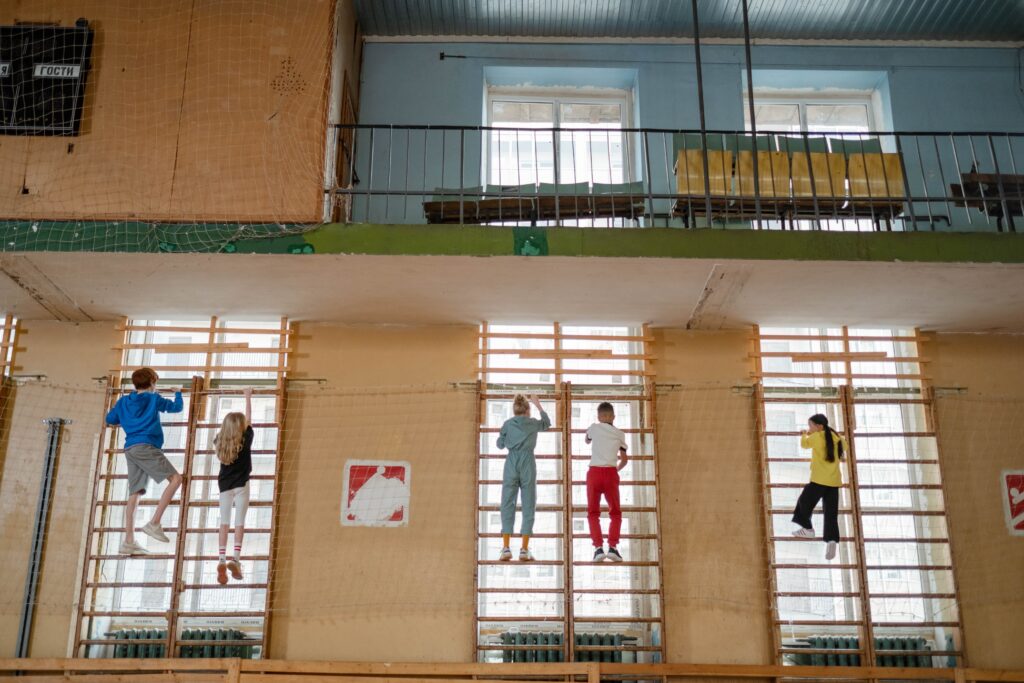Professional Placement in Physical Education

Over the course of the 4 Year PRIME PETE Programme student teachers will spend over 20% of the programme time in school settings. The dimensions identified are wide ranging and designed to be embedded in a 4-Year programme building and scaffolding the development of knowledge, skills, and competences. Professional placement is designed to give the student teacher an opportunity to learn about teaching and learning in physical education, to gain practice in teaching physical education, to apply educational theory in a variety of physical education teaching and learning situations and school contexts in a way that is structured and supported. The support should be undertaken by professionals, including the cooperating class teacher and the University tutor, with expertise in primary physical education and in general pedagogy relevant to physical education.
Suggested Number of ECTs
48
Professional Placement with supporting University/college-based seminars
Dimensions Core
- D1S1, D1S2, D1S3, D1C1
- D2K1, D2S1, D2S2, D2S3, D2S4, D2S5
- D3K1, D3S1, D3S2, D3C1, D3C2, D3C3
- D4K1, D4S1, D4S2, D4C1, D4C2, D4C3
- D5C2, D5C3
Dimensions Extended
- D1K5, D1K6, D1C2, D1C3
- D2K2, D2K3, D2K4, D2K5, D2S6, D2S7, D2S8, D2C1, D2C2, D2C3
- D3K2, D3K3, D3S3, D3S4, D3S5, D3S6
- D4K2, D4S4, D4C4, D4C5
- D5S1, D5S2, D5S3, D5C4, D5C5
Indicative Content
- The importance of gaining experience teaching physical education in a variety of school settings and class levels
- Planning, implementing, and evaluating teaching and learning in physical education including design of units of work and lesson plans
- Student teachers will be encouraged to record, and reflect upon, their perspectives by documenting their experiences through a variety of tasks which will integrate theory and practice.
- The importance of critiquing teaching and learning in physical education lessons through observation, reflection, and analysis
- Working with and learning from the cooperating teacher
- The role of the external provider in physical education, extracurricular and community settings
- Teaching of aquatics in the physical education programme and the role of support staff
- School University partnerships; the University tutor, the cooperating teacher and the school placement coordinator and school principal
- Child protection and police vetting
- Principles of professional practice in physical education
- Safe practice in physical education
- Evaluation informed by dialogue, reflection, and literature
- Assessment and recording of children’s achievements in physical education
MODULE LEARNING OUTCOMES
- LO1: apply educational theory to practice of teaching physical education;
- LO2: observe and critique teachers teaching physical education in primary lessons;
- LO3: eapply knowledge of the individual potential of pupils, their dispositions towards learning, their varying backgrounds, identities, experiences and learning styles to teaching, learning and assessment;
- LO4: reflect critically on their practice of teaching physical education on an ongoing basis to inform/improve that practice;
- LO5: plan coherent, differentiated, and integrated lessons and programmes that identify skills, knowledge and methodologies related to physical education for primary school children;
- LO6: link practice to the theory of physical education informed by ongoing reflection on professional practice;
- LO7: analyse physical activity practices in the context of school life to develop an understanding of school culture related to physical education, physical activity, and school sport;
- LO8: identify how school culture impacts on implementation of physical education;
- LO9: develop strategies for the promotion of positive relationships and communicating effectively relevant to physical education with the cooperating class teacher, external providers, pupils, parents, colleagues, the school principal, school management and the wider community;
- LO10: create and maintain a safe, interactive and challenging environment for physical education using strategies that promote and maintain positive behaviour, in accordance with school policy.